Check out this cool case submitted by Jessica Trubey from Lincoln Memorial University!
Case:
1 year old Nubian doe. Presenting for chronic lameness.
History:
Patient appeared acutely lame back in February 2018. Owner suspected trauma as the patient was housed with 4 other goats at the time and was the bottom of the pecking order. After a brief physical exam, owner elected to hold off on treatment to see if the injury would heal on its own. In May, patient received a physical exam by two veterinarians with unremarkable exam findings, aside from obvious limping on the left hind limb, mainly appearing to be in the hip or stifle joint. Physical exam showed no hoof abnormalities, no muscle wasting, no decreased range of motion of any joints, no pain elicited upon manipulation or palpation, and no heat or swelling of any parts of extremities. Veterinarian prescribed Meloxicam 15 mg – 1.5 tablets PO SID to see if pain control effected lameness. After a month of Meloxicam administration, no improvement was noted, so owner pursued a physical exam with another veterinarian in June. This vet suspected possible luxation of hip joint, so radiographs of hips and stifles were recommended along with discontinuation of the Meloxicam. Radiographs revealed no bone or joint changes or abnormalities per veterinarian at the time. Veterinarian recommended therapeutic laser treatments of twice a week for 3 weeks at the acute inflammation setting over the hip and stifle of affected leg. Following laser treatments, no improvement was noted. September no changes in lameness are present, for better or worse. Not currently on any medications. Vaccines received CDT April 2018. Dewormer: injectable doramectin in June 2018. No other medical history aside from a bout of mild diarrhea in June. Prior to May kept at pasture; since then has been fed hay predominately with some grain supplementation.
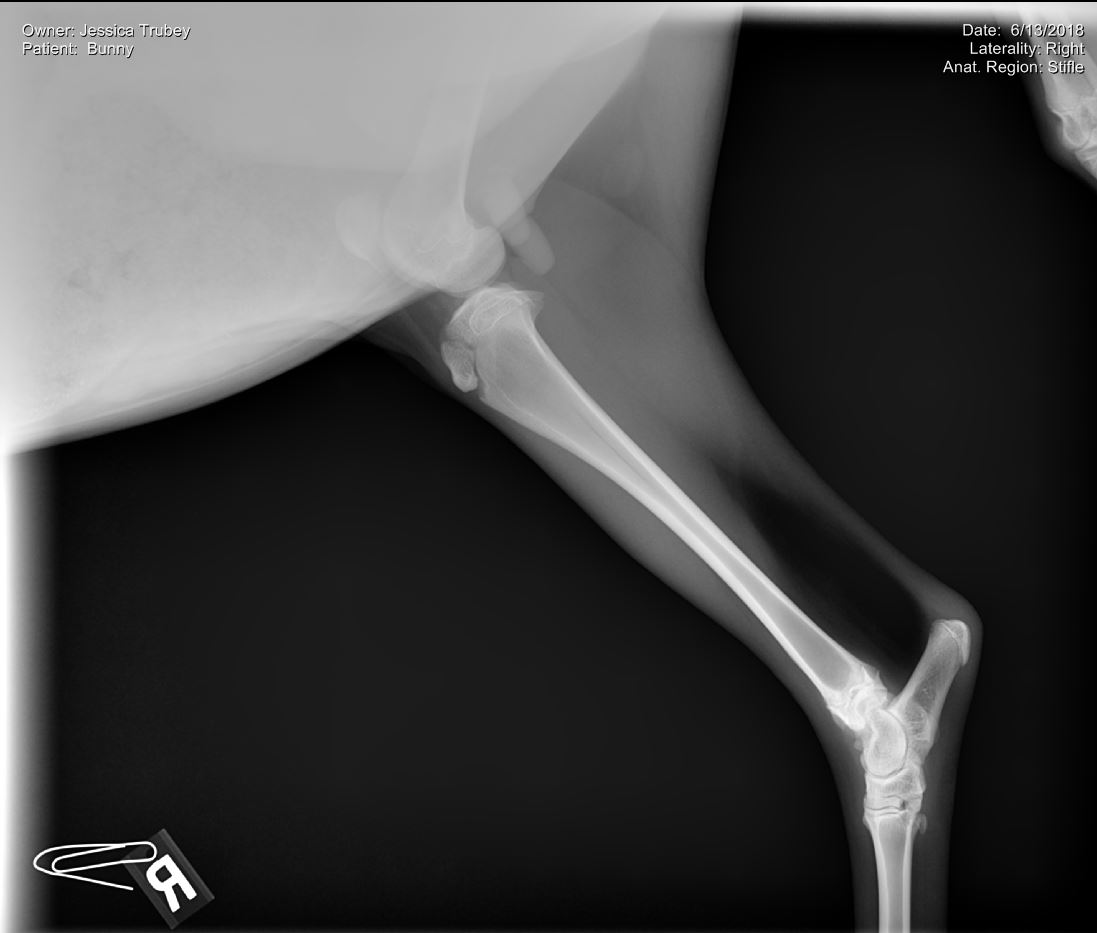 Lat Stifle 6/13/18
Lat Stifle 6/13/18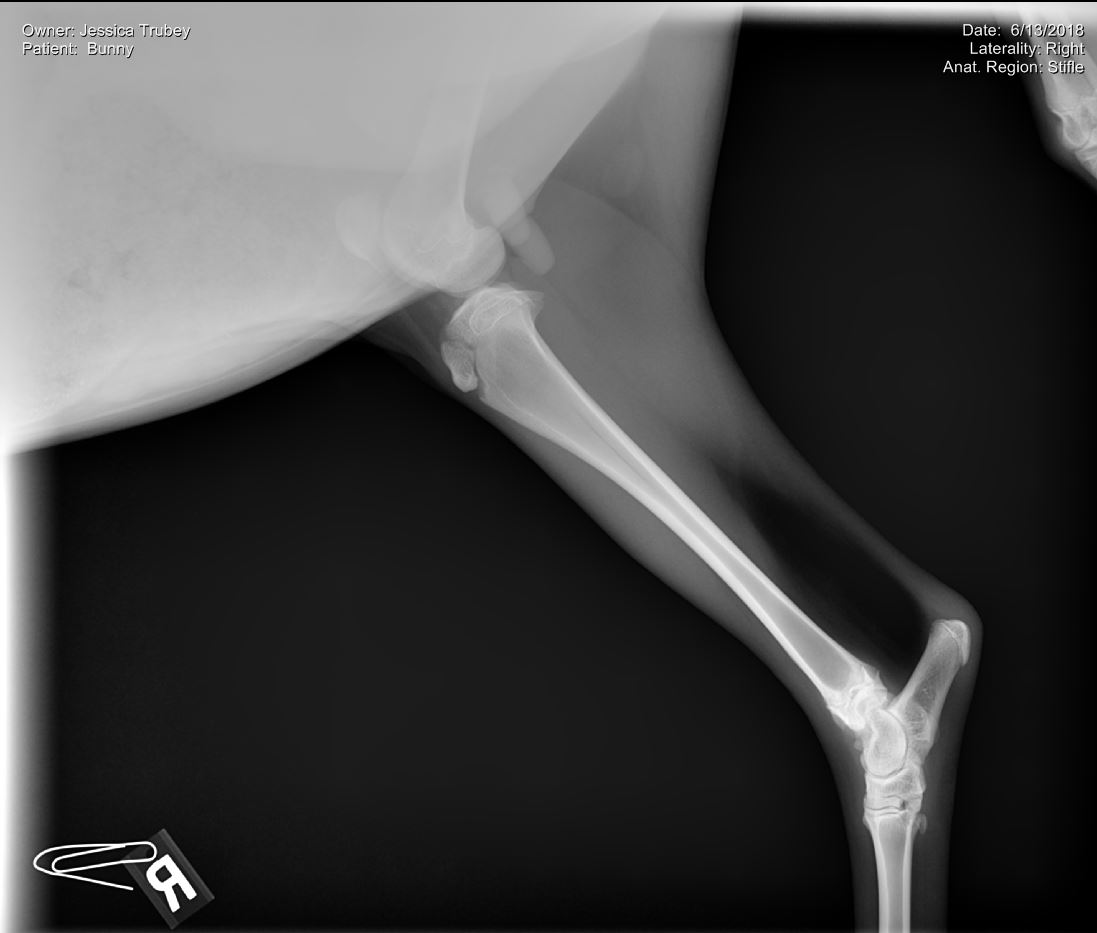 Rt Stifle and Hock 6/13/18
Rt Stifle and Hock 6/13/18
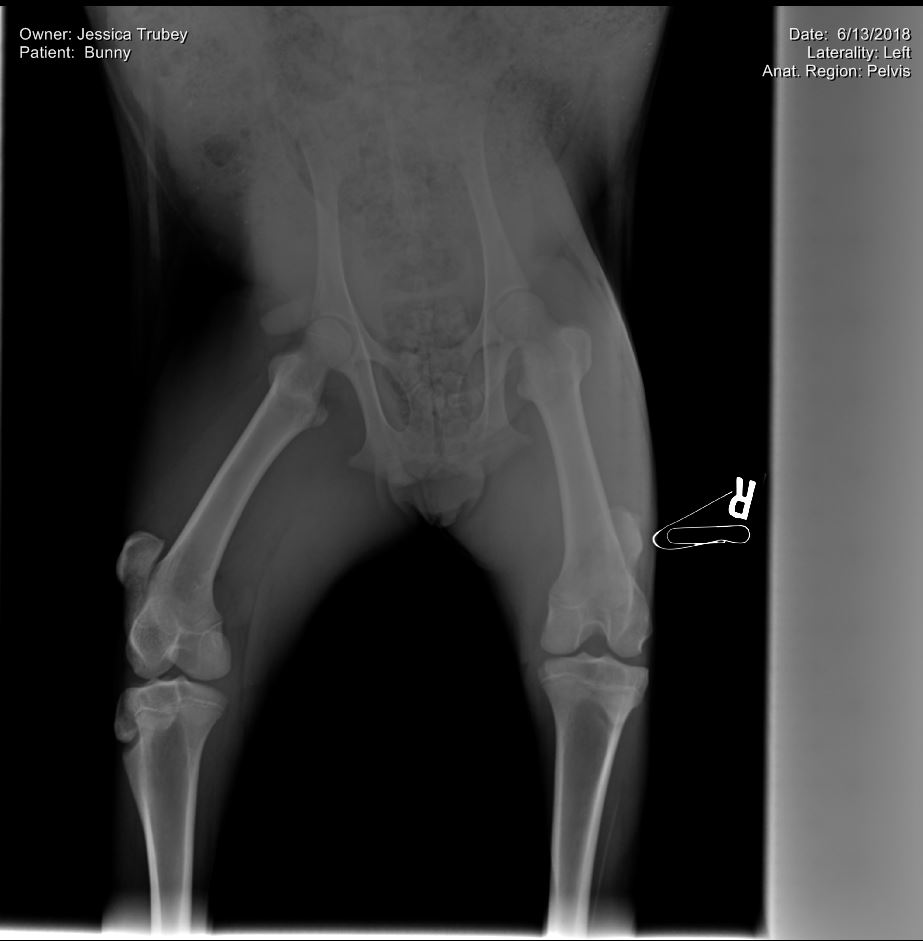 Pelvis 6/13/18
Pelvis 6/13/18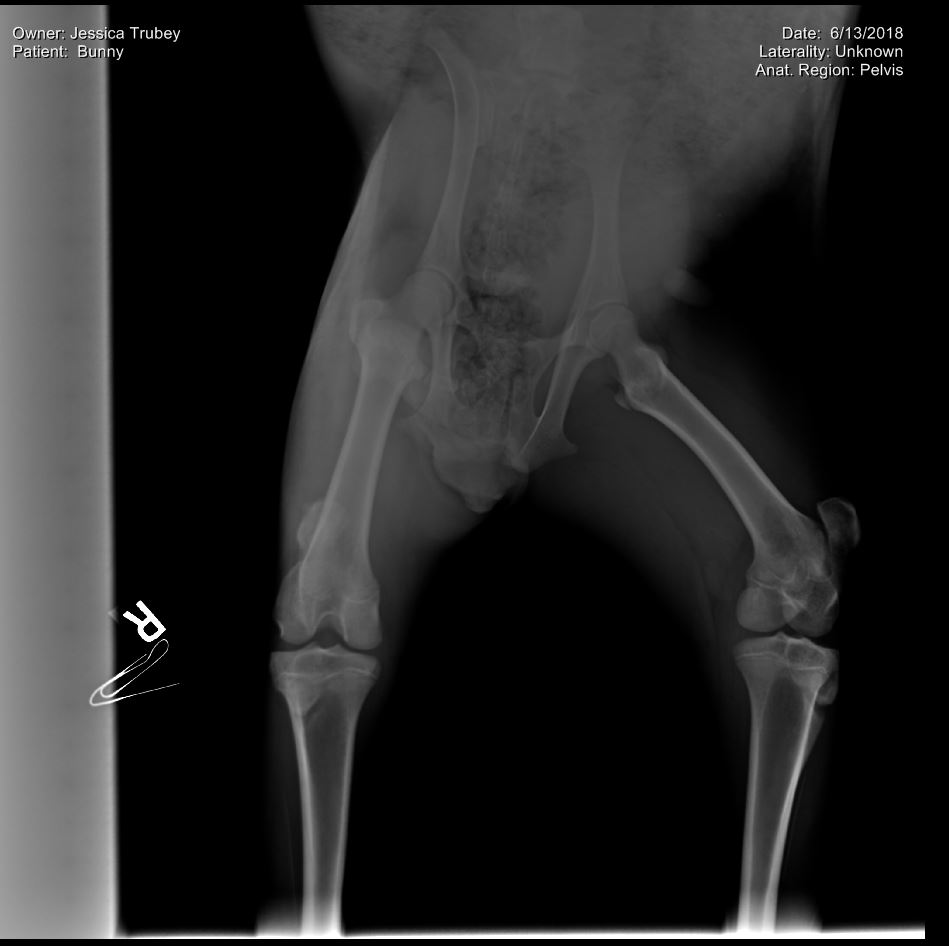 Pelvis 2 6/13/18
Pelvis 2 6/13/18
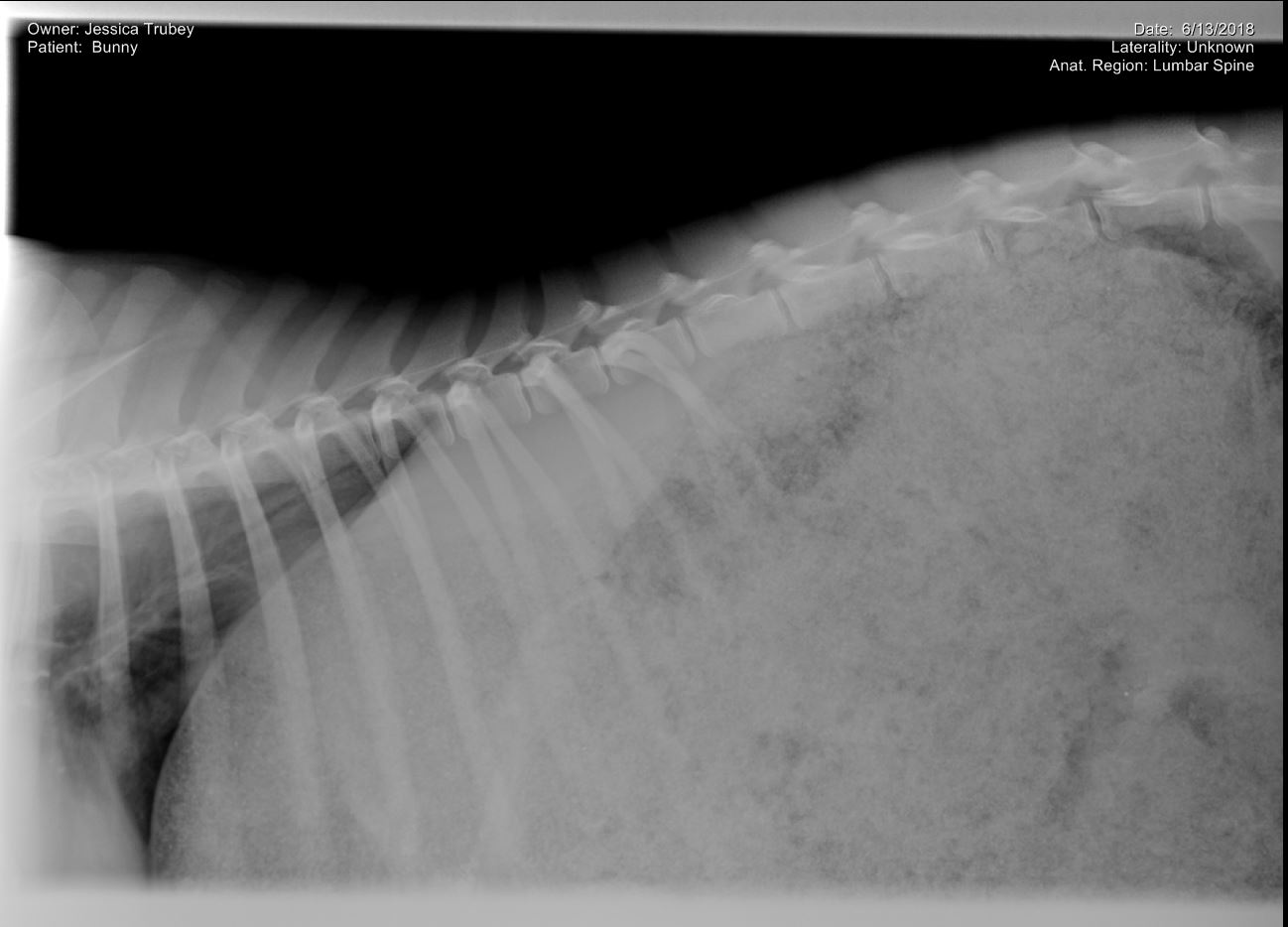 Spine 6/13/18
Spine 6/13/18
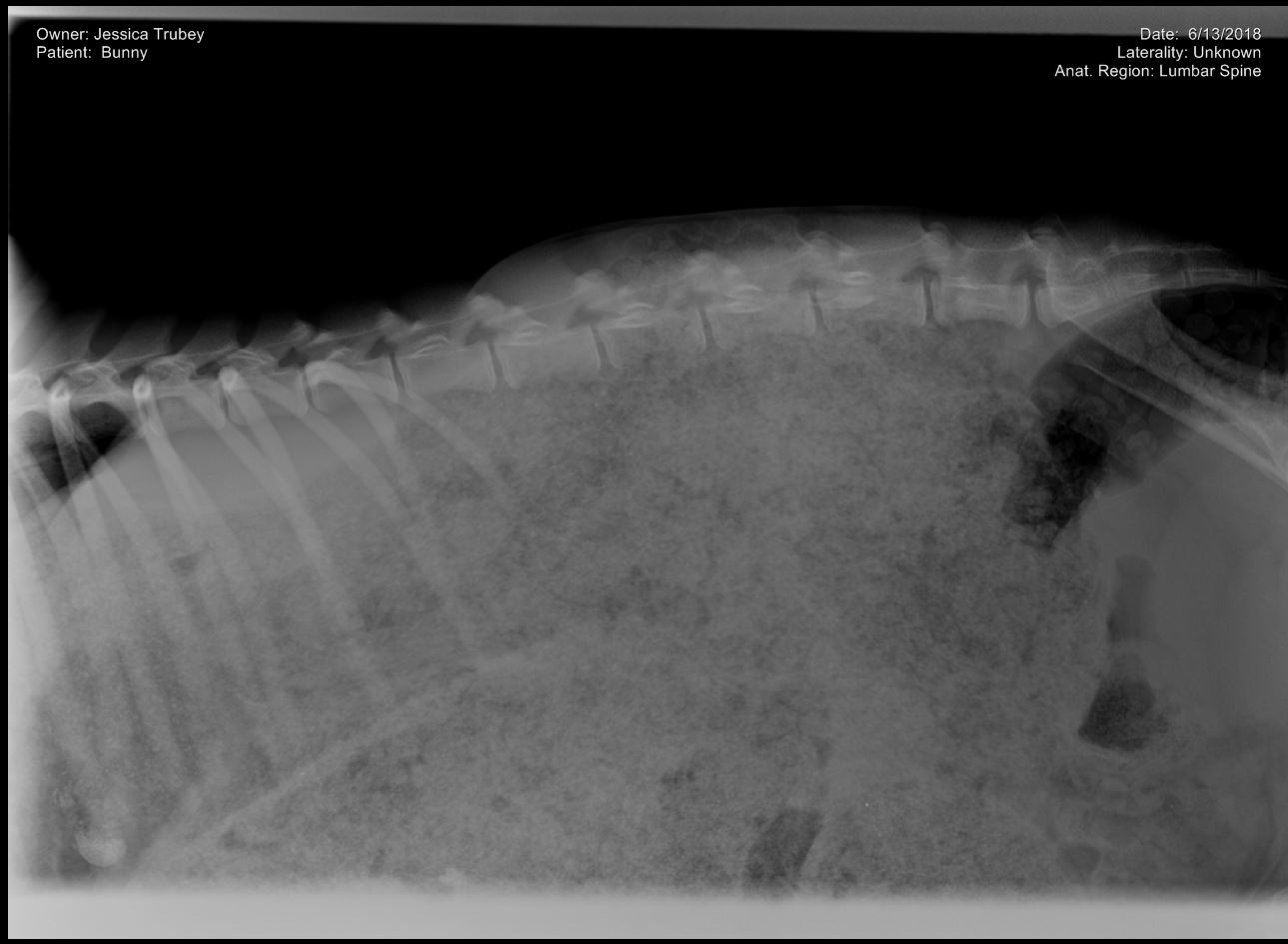 Spine 2 6/13/18
Spine 2 6/13/18
 Thursday, December 21, 2023 at 12:00PM
Thursday, December 21, 2023 at 12:00PM 
 Funny,
Funny,  Goats,
Goats,  caption in
caption in  Caption Contest
Caption Contest 


